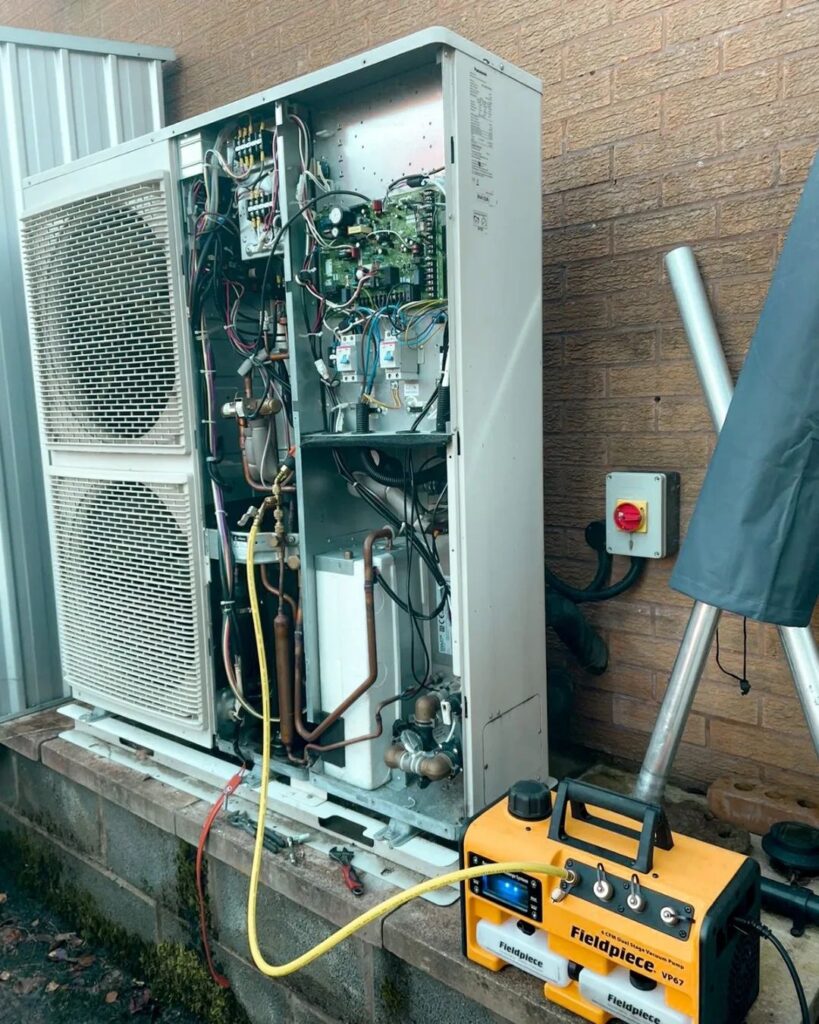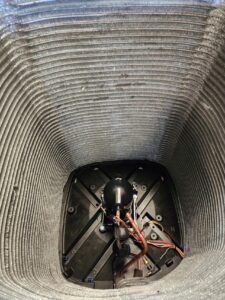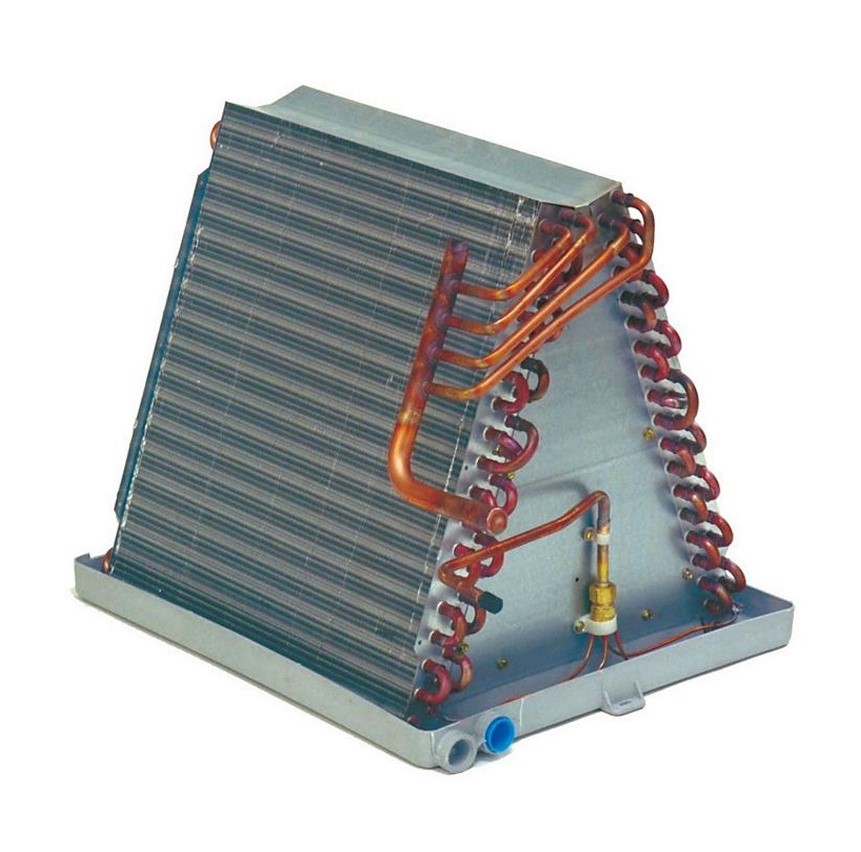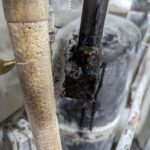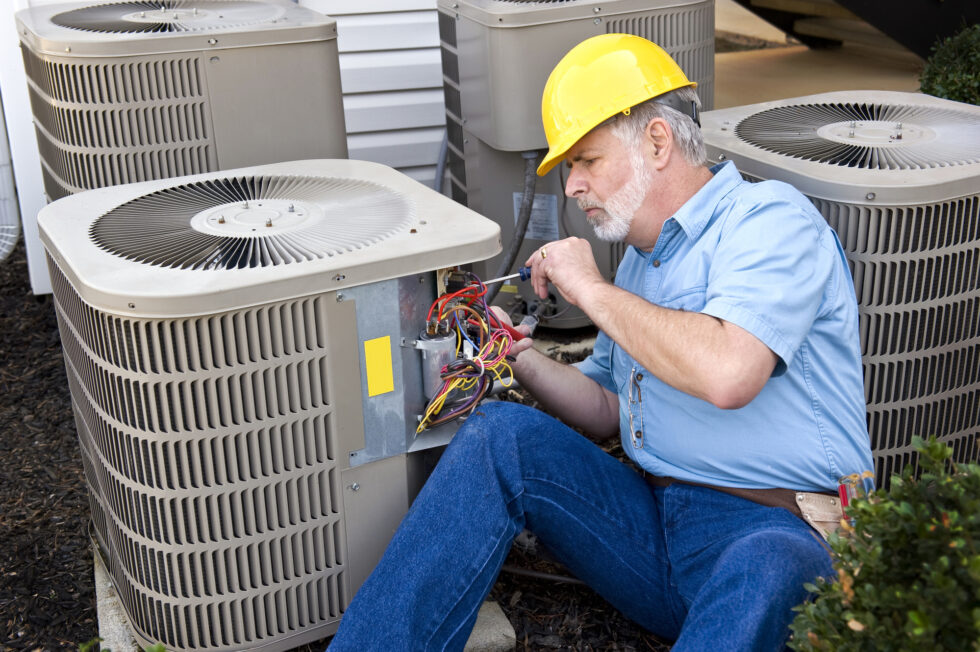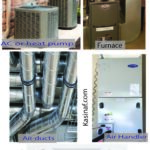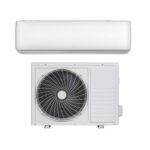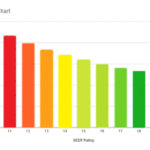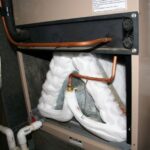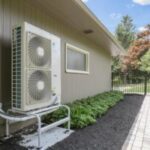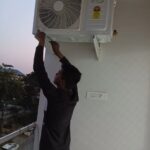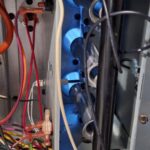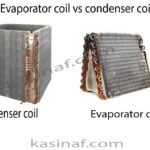What is a heat pump?
A heat pump is a mechanical system that transfers heat from one area to another, either warming or cooling a space. It works by using a refrigerant to absorb heat from one source, like air or water, and then transferring it to another area using a compressor and evaporator coils. In heating mode, it extracts heat from the outside air (even in cold temperatures) and moves it inside. In cooling mode, it removes heat from inside and releases it outside. This efficient process makes heat pumps versatile for both heating and cooling purposes in homes and buildings.
During colder seasons, it extracts heat from the cold outdoor air, transferring it indoors. Conversely, in hotter months, it extracts heat from indoor air, thereby cooling the interior. Operating on electricity, this system employs refrigerant to facilitate heat transfer, ensuring year-round comfort. Its dual heating and cooling function often eliminates the necessity for separate heating systems. In regions with colder climates, an electric heat strip can supplement the indoor fan coil for enhanced heating. Unlike furnaces, heat pumps do not rely on fossil fuels, rendering them more environmentally sustainable.
Types of Heat Pump
Air-Source Heat Pumps
- Function: Transfer heat between indoor and outdoor air.
- Popularity: Common choice for residential heating and cooling.
- Operation: Extracts warmth from outdoor air to heat indoors and reverses the process for cooling.
Ground-Source Heat Pumps (Geothermal)
- Function: Transfer heat between indoor air and the ground.
- Efficiency: Generally more efficient but pricier to install.
- Cost Consideration: Lower operating costs due to consistent ground temperature.
- Benefit: Maintain efficiency throughout the year.
Heat Pump basics
Contrary to their name, heat pumps don’t generate heat; instead, they transfer heat from one location to another. While furnaces produce heat internally, heat pumps draw heat from the outdoor air, even during colder weather, and move it indoors. In cooling mode, both heat pumps and air conditioners work similarly, extracting heat from indoor air and releasing it outdoors through their units.
Choosing the Right System
Determining the ideal system for your home involves multiple considerations, including the home’s size and the climate in your area. These factors play a crucial role in deciding between a heat pump and a furnace for efficient heating and cooling solutions.
where do heat pumps work best?
Optimal Environments for Heat Pumps
For homeowners seeking new heating or cooling systems, the climate of their location plays a pivotal role in selecting a suitable heat pump. Typically, heat pumps are more prevalent in regions with mild climates, where temperatures seldom plummet below freezing. In colder areas, they can be paired with furnaces for efficient heating, especially during extremely cold days. This amalgamation creates a dual fuel system, leveraging the furnace when the heat pump’s efficiency diminishes in very low temperatures. Such systems are highly cost-effective and energy-efficient.
How cold is too cold for a heat pump?
Most heat pumps start losing efficiency when outdoor temperatures drop below 40°F. They become significantly less effective in maintaining optimal performance between 20°F and 30°F. Generally, when temperatures fall below 25°F, the efficiency of standard heat pumps notably declines.
Do heat pumps work below 20 degrees?
Most standard heat pumps struggle to operate efficiently below 20 degrees Fahrenheit. At these low temperatures, the effectiveness of a heat pump is notably reduced, impacting its ability to provide efficient heating for a home.
Do heat pumps work in the northeast?
Heat pumps are an excellent HVAC choice in the Northeast, covering states like, Maine, New York, Massachusetts, Connecticut, New Jersey , Vermont, New Hampshire, and Rhode Island. In the past, these systems struggled in colder climates, particularly when temperatures dropped below freezing. However, technological advancements have made them increasingly efficient and suitable for use even in the colder northern states.
will a heat pump work in my area
Heat pumps can work effectively in various regions, but their efficiency may vary based on climate. If your area experiences moderate winters without prolonged sub-freezing temperatures, a heat pump could be a good fit. However, in extremely cold climates, they might need a backup heating source for optimal performance. Consulting a local HVAC professional can help determine if a heat pump suits your area’s climate and your home’s specific heating and cooling needs.
Components of a heat pump system and the functions of each.
explanation of each component in a heat pump system and its importance.
Outdoor Unit:
This part contains a coil and a fan. The coil’s role varies based on the mode of operation (either as a condenser in cooling mode or an evaporator in heating mode). The fan is crucial for the heat exchange process, pushing outside air over the coil to facilitate heat transfer.
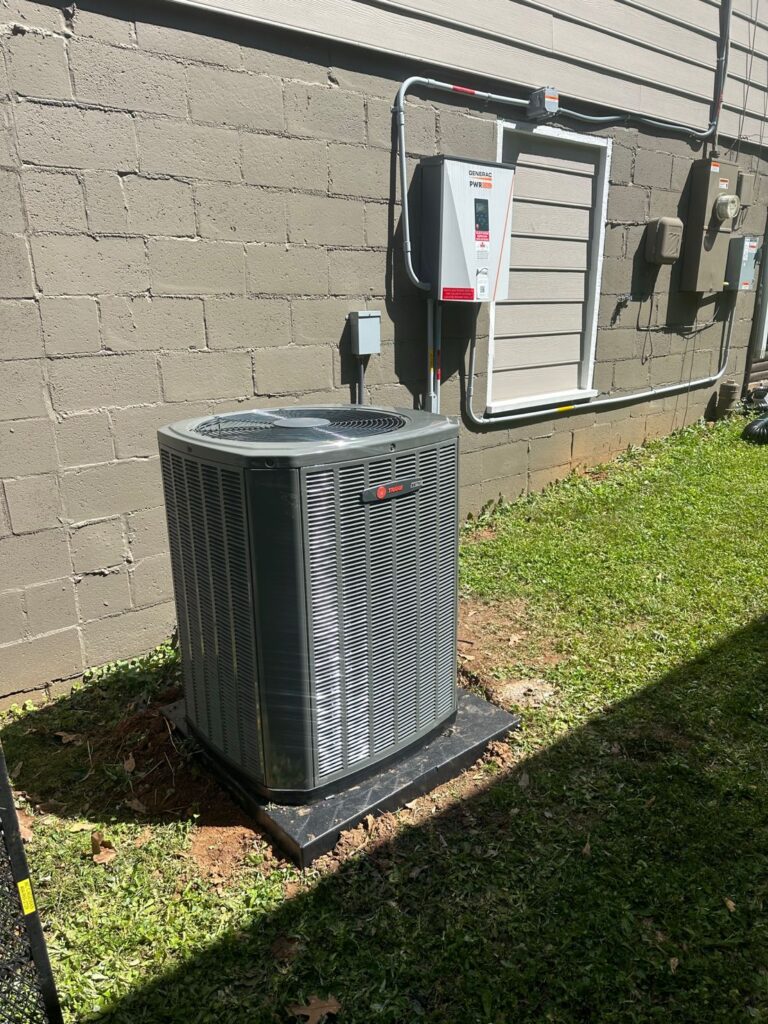
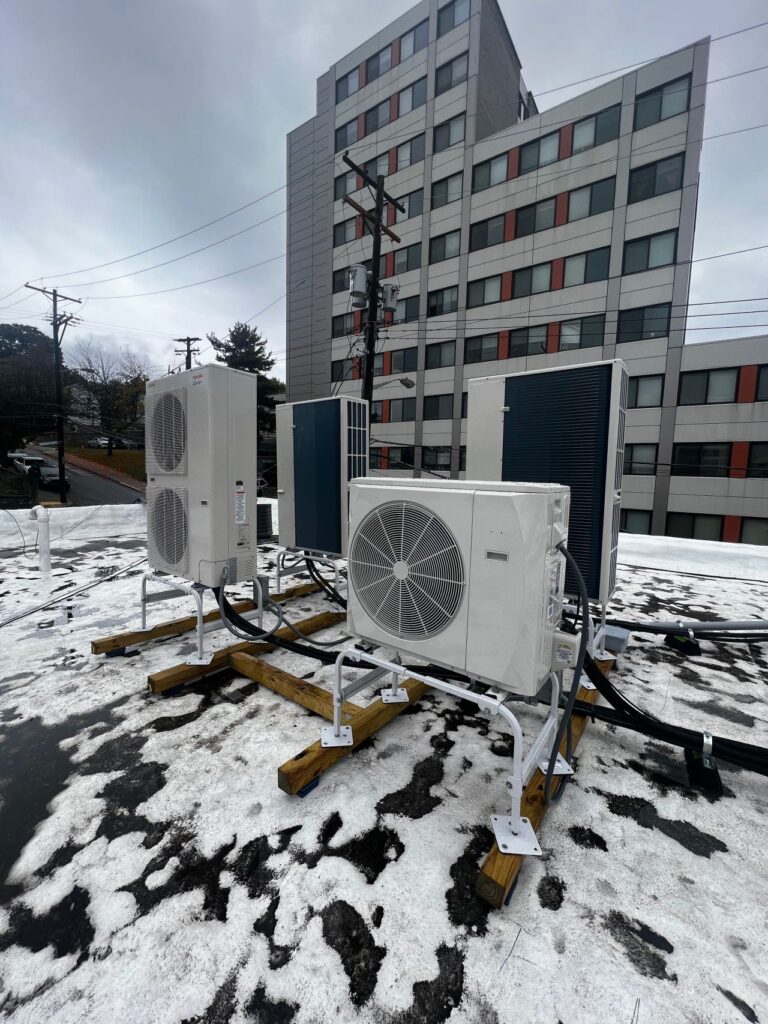
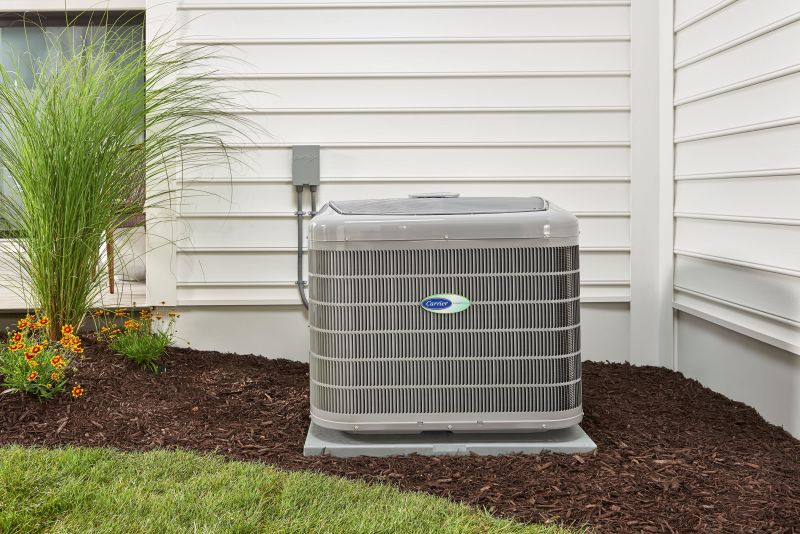
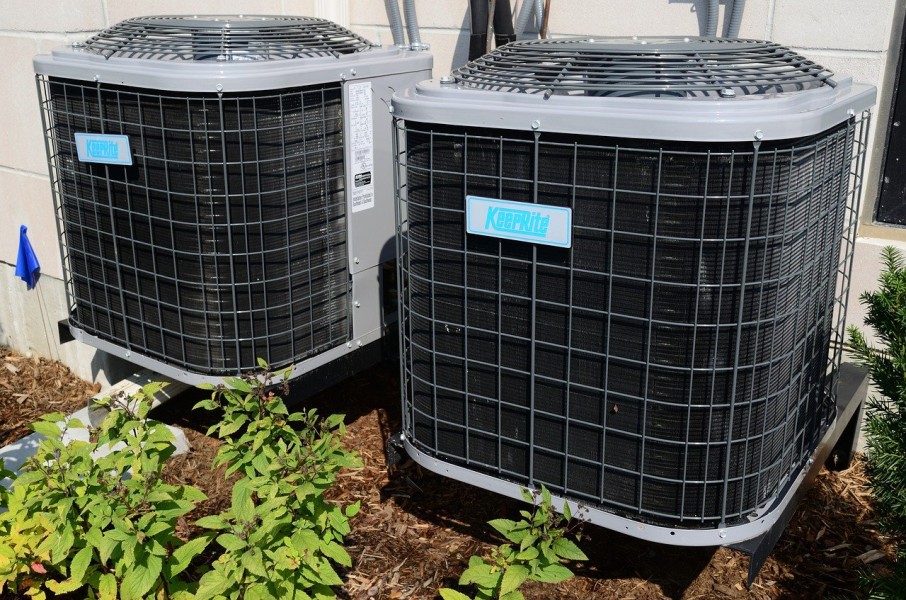

Indoor Unit (Air Handler Unit):
Similar to the outdoor unit, the indoor unit also comprises a coil and a fan. The coil’s function changes according to the mode—acting as an evaporator during cooling or a condenser while heating. The fan distributes air across the coil, allowing it to flow through the home via ducts.
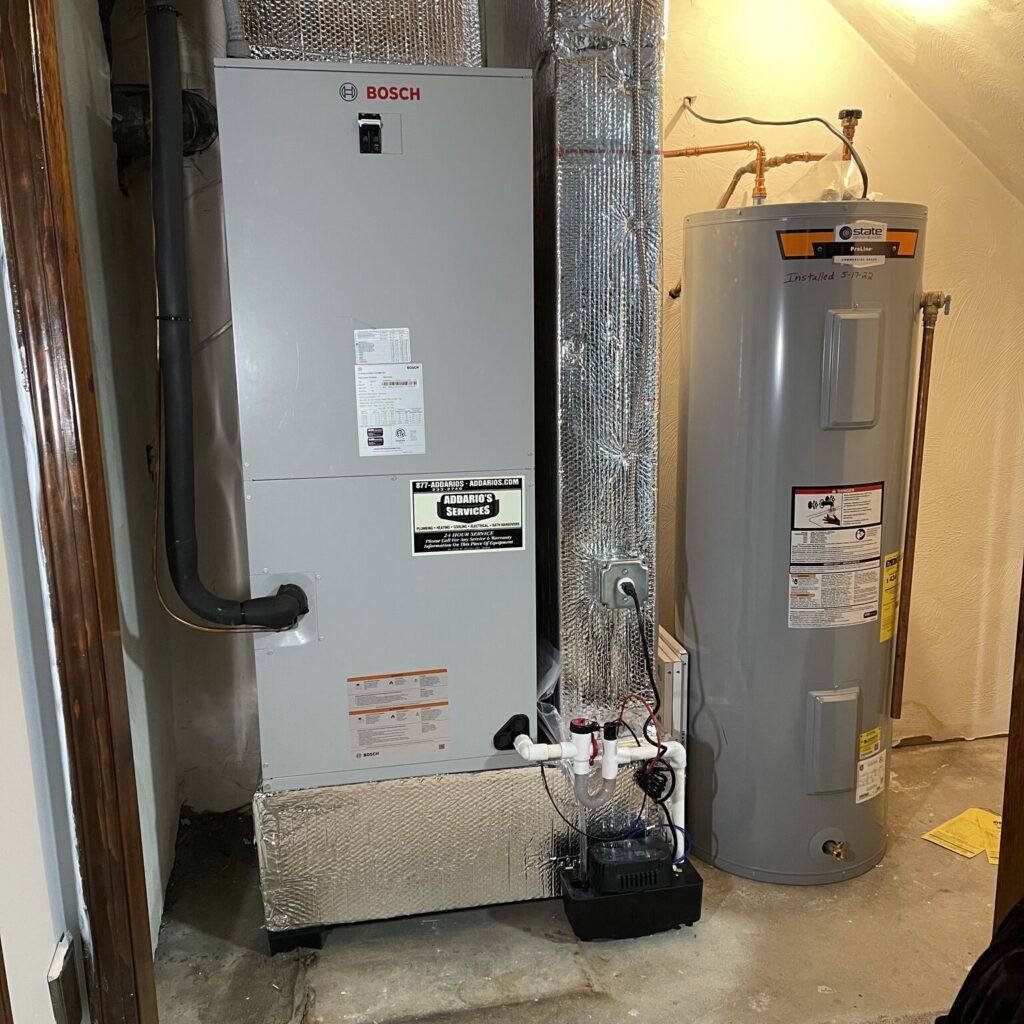
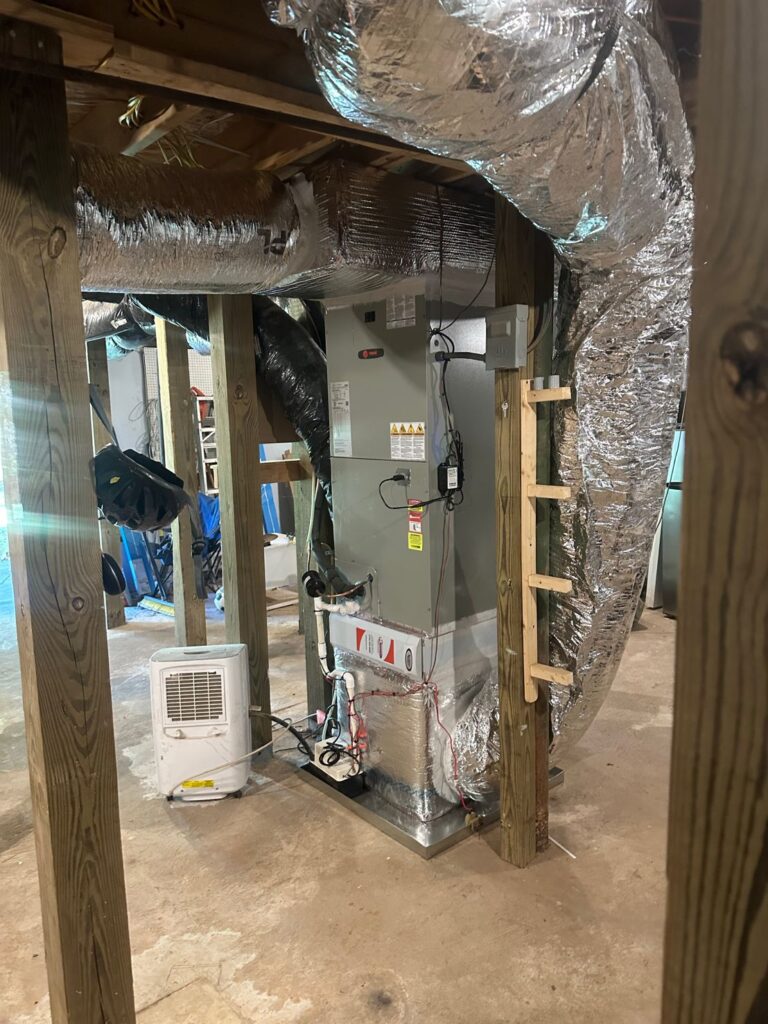

Refrigerant:
This substance is the lifeblood of the heat pump system. It circulates throughout the system, absorbing heat from one area and releasing it in another. As it transitions between liquid and gas phases, it facilitates heat transfer.
Compressor:
This component plays a pivotal role in the heat exchange process. It pressurizes the refrigerant, significantly increasing its temperature, and circulates it throughout the system to accomplish heat transfer.
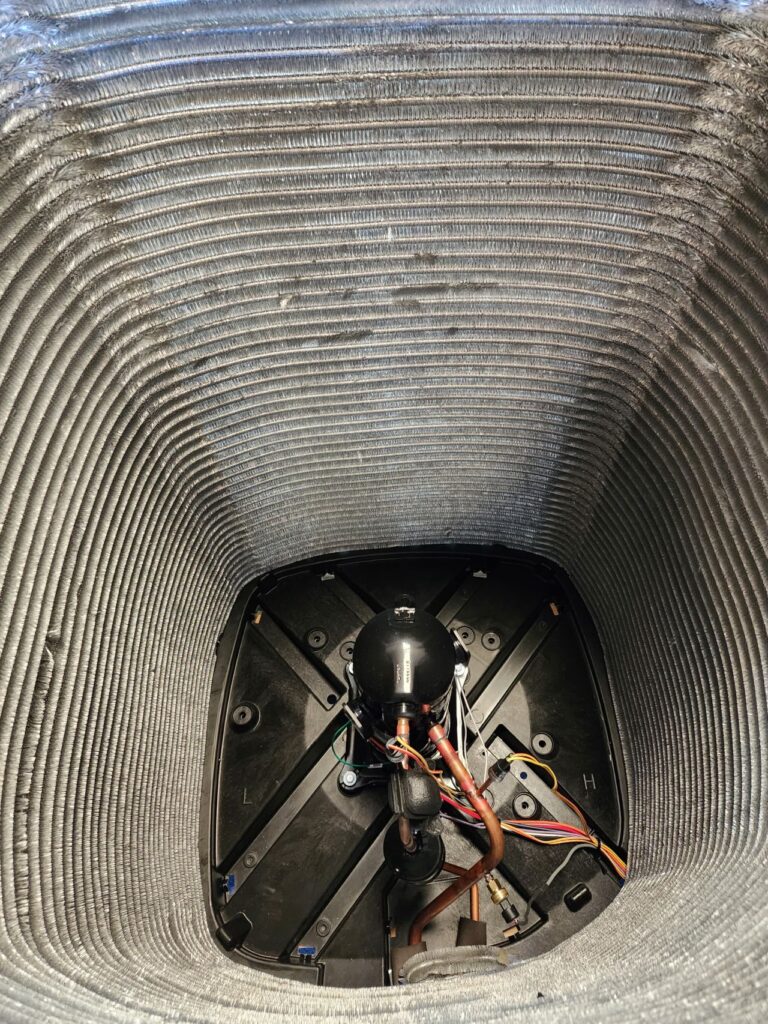
Reversing Valve:
Essential for the heat pump’s dual functionality, the reversing valve changes the direction of refrigerant flow. It enables the system to switch between heating and cooling modes by reversing the cycle.
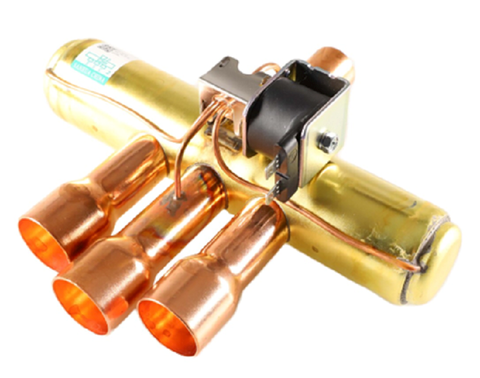
Expansion Valve:
As a metering device, the expansion valve regulates the flow of refrigerant. It decreases the refrigerant’s pressure and temperature as it moves through the system, aiding in the heat transfer process.
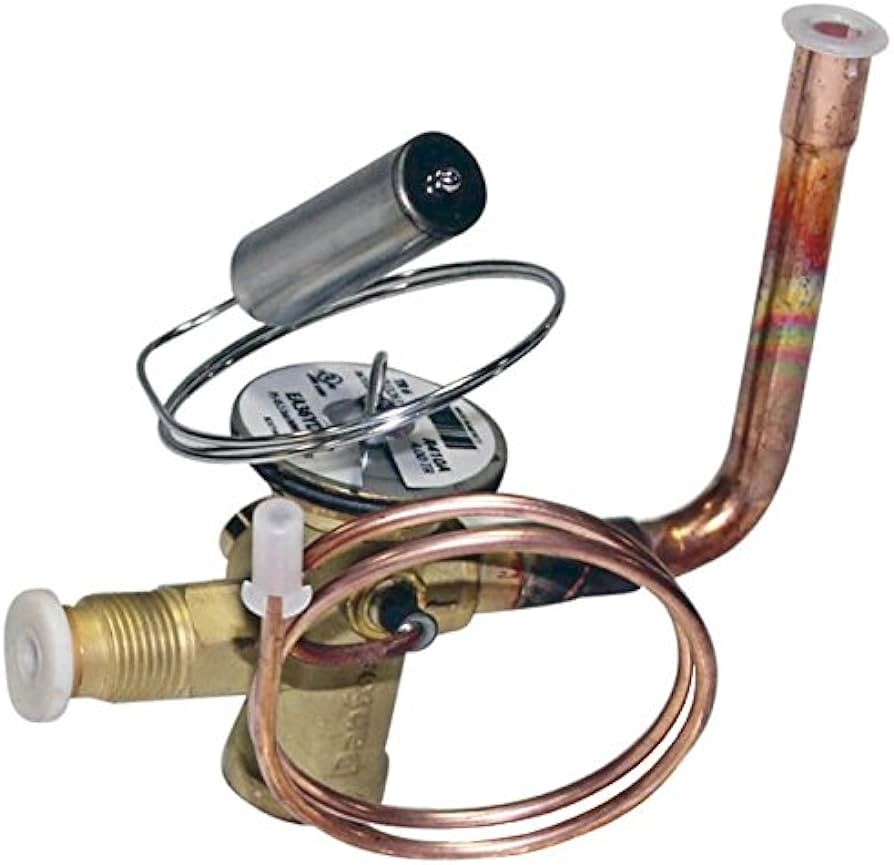
Each component works cohesively within the heat pump system, ensuring the effective transfer of heat between the indoors and outdoors, maintaining desired temperatures within the home.
How does a heat pump work?
Heat pumps operate by transferring heat rather than generating it. They use refrigerant circulating between the indoor air handler unit and the outdoor compressor to redistribute heat from the air or ground. During cooling, they absorb indoor heat and expel it outdoors. Conversely, in heating mode, heat pumps extract heat from the ground or even cold outdoor air and release it indoors for warmth.
how a heat pump operates in cooling mode| How does a heat pump work in summer?
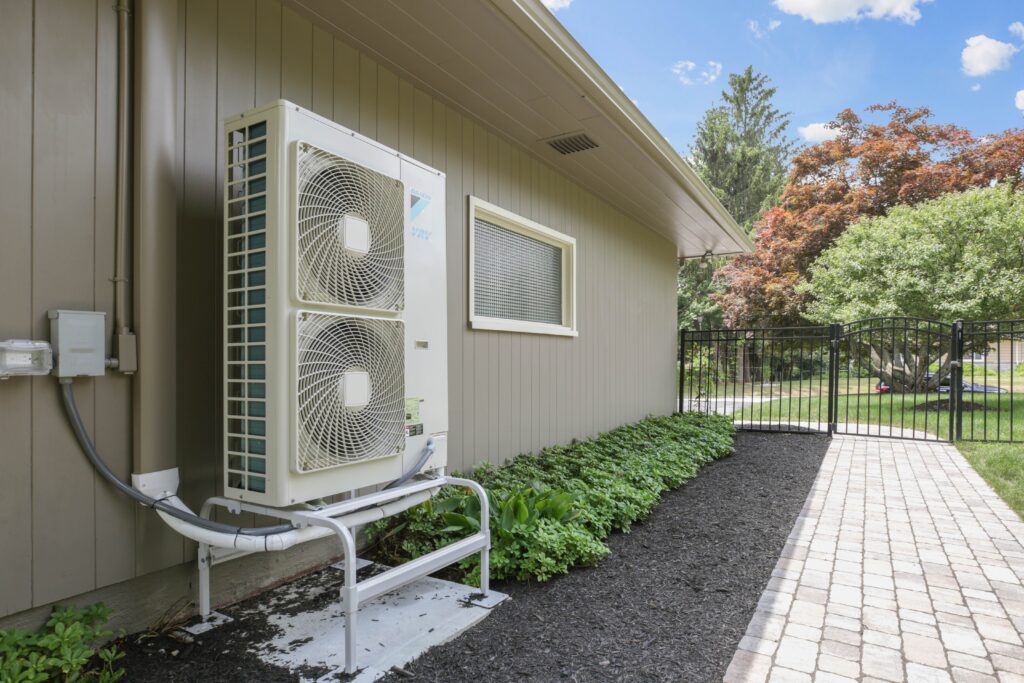
Step 1: Absorbing Heat
Evaporation: The process begins as liquid refrigerant circulates through the indoor coil (evaporator), typically located in the air handler unit. When warm indoor air passes over the coil, the refrigerant absorbs heat from the air. As a result, the refrigerant, initially in liquid form, absorbs this heat energy, causing it to evaporate into a gas. The absorbed heat is removed from the indoor air, cooling it.
Step 2: Compression and Heating
Pressurization: The gaseous refrigerant, carrying the absorbed heat energy, moves to the compressor—a vital component of the heat pump system. Inside the compressor, the gas gets compressed, increasing its pressure significantly.
Temperature Rise: As the refrigerant is compressed, its temperature rises significantly due to the laws of thermodynamics. This hot, high-pressure gas is now ready to release its heat energy.
Step 3: Heat Release
Outdoor Cooling: The high-pressure, hot gas is transported to the outdoor coil, which functions as a condenser. Here, a fan blows outdoor air over the coil’s surface.
Heat Transfer: The hot refrigerant releases its stored heat energy to the cooler outdoor air. As the outdoor air extracts heat from the refrigerant, the refrigerant undergoes a phase change from a hot gas to a liquid state (condensation).
Condensation: The heat release causes the refrigerant to lose heat energy and transition back into a liquid state, ready for the next cycle.
Step 4: Return to Indoor Unit
Circulation: The now-cooled liquid refrigerant moves back through the system to the indoor expansion valve, where the pressure and temperature drop.
Step 5: Cooling the Refrigerant
Pressure Reduction: The expansion valve significantly reduces the pressure of the cooled liquid refrigerant, further lowering its temperature.
Recycling Process: The cooled liquid refrigerant returns to the indoor coil (evaporator) to restart the cycle of absorbing heat from indoor air, thus continuously cooling the indoor environment.
This cyclic process allows the heat pump to remove heat from indoors and release it outdoors, effectively cooling the indoor space during warm weather.
How a heat pump works in heating mode or how does a heat pump work in winter?
During winter or in heating mode, a heat pump reverses its refrigerant flow via the reversing valve, essentially shifting the source of heat to the outdoor air, even when temperatures are low. This reversal allows the release of heat energy indoors. The outdoor coil, now functioning as an evaporator, absorbs heat energy from the outside air, turning liquid refrigerant into cold gas. This gas is then pressurized, converting it into hot gas. As this hot gas moves to the indoor unit, it releases heat to warm the indoor air and condenses back into warm liquid. Upon returning to the outdoor unit, the pressure reduces, transforming it back into cool liquid, restarting the cycle.

Detailed step by step breakdown of how a heat pump works in heating mode or during winter
Step 1: Reversing the Refrigerant Flow
During heating mode, a heat pump uses a component called a reversing valve to reverse the flow of refrigerant. This valve redirects the path of the refrigerant, causing it to move in the opposite direction than during cooling mode.
Step 2: Absorption of Heat from Outdoor Air
In the outdoor unit, the evaporator coil now functions as the heat collector. It absorbs heat energy from the outside air, even in colder temperatures. The collected heat causes the refrigerant, initially in liquid form, to absorb this thermal energy and transform into a cold gas.
Step 3: Compression and Conversion to Hot Gas
The cold gas then moves into the compressor, which pressurizes it. This compression process raises the temperature of the gas, turning it into a hot, high-pressure gas.
Step 4: Heat Release Indoors
The hot gas travels to the indoor unit where it passes through a coil. In this setup, the indoor coil now acts as the condenser. As the hot gas flows through the indoor coil, it releases its heat energy to the air circulating inside the house. This process warms up the indoor air.
Step 5: Condensation and Transformation to Warm Liquid
As the hot gas loses heat, it condenses back into a warm liquid state. This warm liquid refrigerant then heads back to the outdoor unit to restart the cycle.
Step 6: Return to Outdoor Unit and Reversal
Once back in the outdoor unit, the warm liquid refrigerant enters the expansion valve. Here, it undergoes a pressure reduction, transforming it back into a cold liquid. This cool liquid now moves to the outdoor coil, ready to absorb more heat from the outside air. This marks the completion of a full cycle. This cyclic process allows the heat pump to extract heat from the outdoor air, even in low temperatures, and transfer it indoors to heat your home

